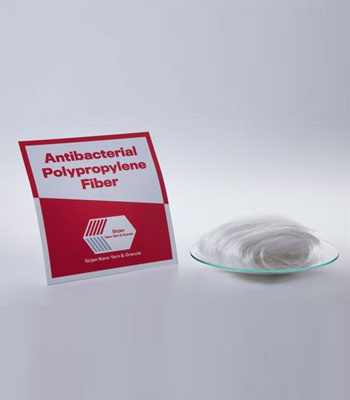Alaleh Azar Antibacterial Towel
$0.00Introduction
With growth in world population and the spread of disease, the number of antibiotic resistant microorganisms is rising along with the occurrence of infections from these microorganisms. By raising the health awareness, some people have focused their attention on educating and protecting themselves against harmful pathogens. In the textile industry, it soon became more important for antimicrobial finished textiles to protect the wearer from bacteria than it was to simply protect the garment from fiber degradation. The need for antimicrobial textiles goes hand-in-hand with the rise in resistant strains of micro-organisms. Towel picks up allergens, germs, and bacteria, locking them deep within the textile’s fibers. By addition of silver, the silver ions attack the bacteria inside the texture and prevent their growth.
Alaleh Azar Antibacterial Towel
$0.00Introduction
With growth in world population and the spread of disease, the number of antibiotic resistant microorganisms is rising along with the occurrence of infections from these microorganisms. By raising the health awareness, some people have focused their attention on educating and protecting themselves against harmful pathogens. In the textile industry, it soon became more important for antimicrobial finished textiles to protect the wearer from bacteria than it was to simply protect the garment from fiber degradation. The need for antimicrobial textiles goes hand-in-hand with the rise in resistant strains of micro-organisms. Towel picks up allergens, germs, and bacteria, locking them deep within the textile’s fibers. By addition of silver, the silver ions attack the bacteria inside the texture and prevent their growth.
Alaleh Azar Antibacterial Towel
$0.00Introduction
With growth in world population and the spread of disease, the number of antibiotic resistant microorganisms is rising along with the occurrence of infections from these microorganisms. By raising the health awareness, some people have focused their attention on educating and protecting themselves against harmful pathogens. In the textile industry, it soon became more important for antimicrobial finished textiles to protect the wearer from bacteria than it was to simply protect the garment from fiber degradation. The need for antimicrobial textiles goes hand-in-hand with the rise in resistant strains of micro-organisms. Towel picks up allergens, germs, and bacteria, locking them deep within the textile’s fibers. By addition of silver, the silver ions attack the bacteria inside the texture and prevent their growth.
Antibacterial Machine-made Carpet
$0.00Introduction
Carpet is a key decorative element which provides the principles of decoration via the use of color and texture. Recently, the carpet industry has lost market share because based on the findings, covering a floor with a carpet increases the illness, asthma and allergies. The use of soft floor coverings in schools, hospitals and other health care facilities has long been controversial as carpet is thought to contribute to the presence of microorganisms in the indoor environment. Indoor air is a complex mixture of bio-aerosols and non-biological particles. Among the most important of these are human and animal occupants that shed skin scales and other fragments, mold spores, viruses, and bacteria. Two types of antimicrobial treatments exist for carpets and coatings. The first type is used in the manufacturing process. The other type is an antimicrobial additive incorporated in a treatment of the carpet fibers during manufacturing.
Antibacterial Machine-made Carpet
$0.00Introduction
Carpet is a key decorative element which provides the principles of decoration via the use of color and texture. Recently, the carpet industry has lost market share because based on the findings, covering a floor with a carpet increases the illness, asthma and allergies. The use of soft floor coverings in schools, hospitals and other health care facilities has long been controversial as carpet is thought to contribute to the presence of microorganisms in the indoor environment. Indoor air is a complex mixture of bio-aerosols and non-biological particles. Among the most important of these are human and animal occupants that shed skin scales and other fragments, mold spores, viruses, and bacteria. Two types of antimicrobial treatments exist for carpets and coatings. The first type is used in the manufacturing process. The other type is an antimicrobial additive incorporated in a treatment of the carpet fibers during manufacturing.
Antibacterial Machine-made Carpet
$0.00Introduction
Carpet is a key decorative element which provides the principles of decoration via the use of color and texture. Recently, the carpet industry has lost market share because based on the findings, covering a floor with a carpet increases the illness, asthma and allergies. The use of soft floor coverings in schools, hospitals and other health care facilities has long been controversial as carpet is thought to contribute to the presence of microorganisms in the indoor environment. Indoor air is a complex mixture of bio-aerosols and non-biological particles. Among the most important of these are human and animal occupants that shed skin scales and other fragments, mold spores, viruses, and bacteria. Two types of antimicrobial treatments exist for carpets and coatings. The first type is used in the manufacturing process. The other type is an antimicrobial additive incorporated in a treatment of the carpet fibers during manufacturing.
Antibacterial Man-made Carpet
$0.00Introduction
Germs, bacteria and microorganisms are the main causes of diseases, infections and bad odors. The average amount of bacteria found in a homeowner’s carpet is 200,000 organisms per square inch. This amount is 4,000 times more than that found on an average homeowner’s toilet seat. Therefore, the use of disinfectants that can reduce the activity of these organisms can be important. In this regard, the antimicrobial activity of silver has been proven, and it has been used in many applications. The present product is an antibacterial carpet containing silver nanoparticles which prevents creation of bad odors in carpet.
Antibacterial Man-made Carpet
$0.00Introduction
Germs, bacteria and microorganisms are the main causes of diseases, infections and bad odors. The average amount of bacteria found in a homeowner’s carpet is 200,000 organisms per square inch. This amount is 4,000 times more than that found on an average homeowner’s toilet seat. Therefore, the use of disinfectants that can reduce the activity of these organisms can be important. In this regard, the antimicrobial activity of silver has been proven, and it has been used in many applications. The present product is an antibacterial carpet containing silver nanoparticles which prevents creation of bad odors in carpet.
Antibacterial Man-made Carpet
$0.00Introduction
Germs, bacteria and microorganisms are the main causes of diseases, infections and bad odors. The average amount of bacteria found in a homeowner’s carpet is 200,000 organisms per square inch. This amount is 4,000 times more than that found on an average homeowner’s toilet seat. Therefore, the use of disinfectants that can reduce the activity of these organisms can be important. In this regard, the antimicrobial activity of silver has been proven, and it has been used in many applications. The present product is an antibacterial carpet containing silver nanoparticles which prevents creation of bad odors in carpet.
Antibacterial Polypropylene Fiber
$0.00Introduction
This product is zinc oxide/polypropylene nanocomposite fibers, which due to the presence of zinc oxide nanoparticles show antibacterial properties. The use of zinc oxide nanoparticles in destroying the bacteria has considerable applications. Due to the presence of zinc oxide nanoparticles inside the polymeric network of the yarn, the rate of releasing nanoparticle is very low; so the long-term antibacterial effect of this product is considerable.
Antibacterial Polypropylene Fiber
$0.00Introduction
This product is zinc oxide/polypropylene nanocomposite fibers, which due to the presence of zinc oxide nanoparticles show antibacterial properties. The use of zinc oxide nanoparticles in destroying the bacteria has considerable applications. Due to the presence of zinc oxide nanoparticles inside the polymeric network of the yarn, the rate of releasing nanoparticle is very low; so the long-term antibacterial effect of this product is considerable.
Antibacterial Polypropylene Fiber
$0.00Introduction
This product is zinc oxide/polypropylene nanocomposite fibers, which due to the presence of zinc oxide nanoparticles show antibacterial properties. The use of zinc oxide nanoparticles in destroying the bacteria has considerable applications. Due to the presence of zinc oxide nanoparticles inside the polymeric network of the yarn, the rate of releasing nanoparticle is very low; so the long-term antibacterial effect of this product is considerable.










